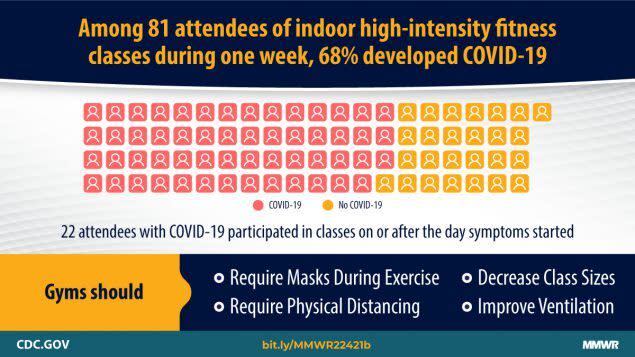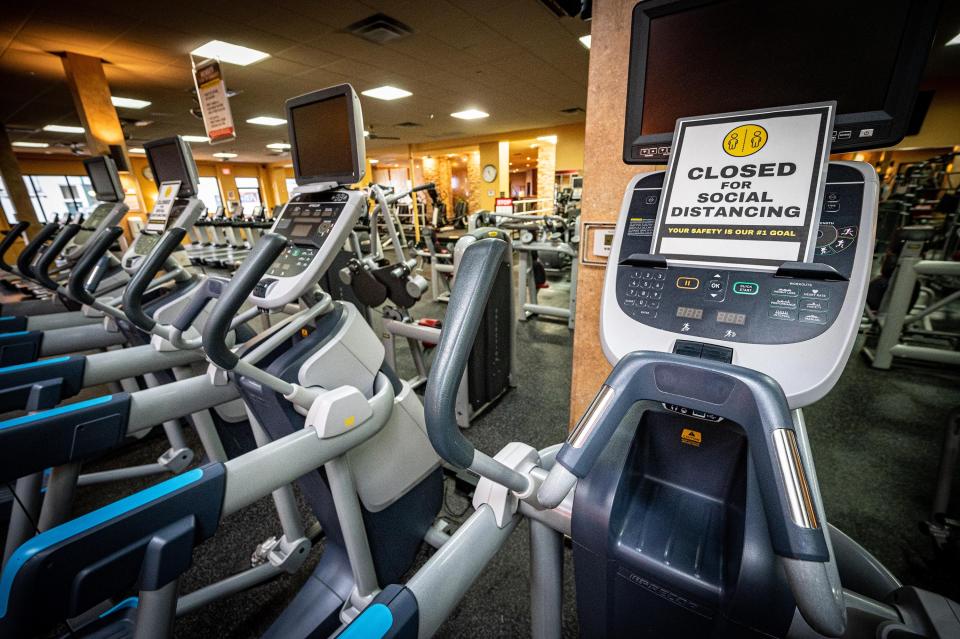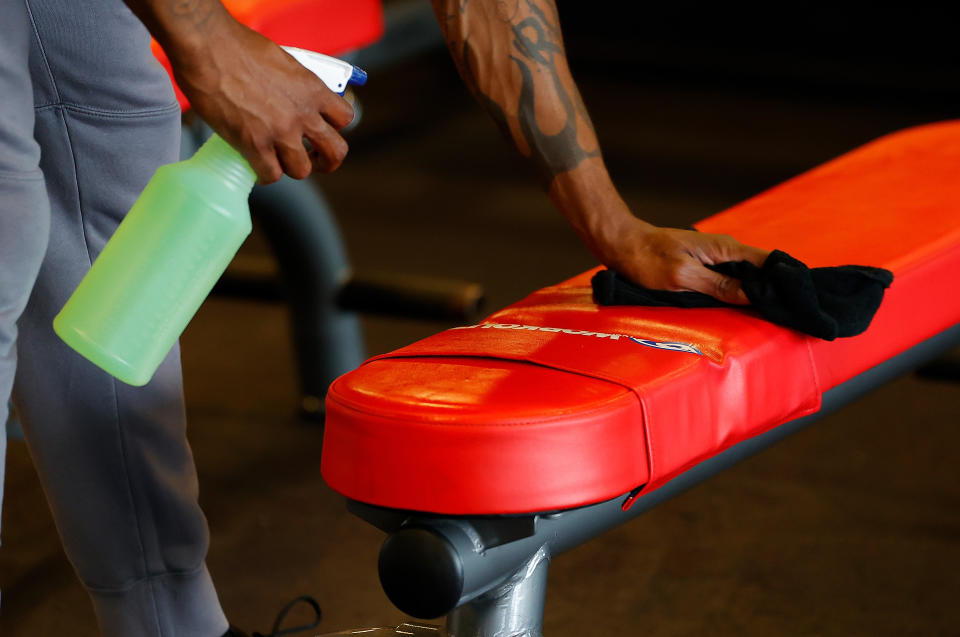CDC Urges Stricter Gym Precautions After COVID-19 Outbreaks Linked To Facilities
Federal health officials are urging gymgoers to wear a mask at all times while exercising indoors after two separate reports published Monday found high coronavirus transmission during high-intensity exercise classes at gyms in Hawaii and Illinois.
COVID-19 outbreaks in both states late last summer were linked to fitness centers that were not reliably enforcing physical distancing, consistent and correct mask use, or reminding patrons and staff to stay home when ill, the Centers for Disease Control and Prevention said in its reports.
In Illinois, the CDC said, 68% of the 81 people who attended indoor exercise classes at one unidentified Chicago facility between Aug. 24 and Sept. 1 ended up contracting the virus. Of those who contracted the virus, 44% admitted they attended an indoor exercise class either on or after the day that their symptoms first started, the CDC said.

The Chicago gym’s guests were required to wear a mask upon entry, had their temperatures taken and were screened for coronavirus symptoms. Workout equipment was also stationed at least six feet apart and class sizes were minimized to help reduce virus transmission. Once exercising, however, guests were allowed to remove their masks, which is largely how the virus is believed to have spread.
In addition to 76% of guests admitting to wearing masks infrequently while exercising, three people admitted to attending a class on the same day or after they received a positive COVID-19 test result, the CDC said.
Unfortunately for gymgoers, these safety failures created an extremely high-risk environment for virus transmission that was rather predictable, Joshua Epstein, an epidemiology professor at NYU’s School of Global Public Health, told The Washington Post.
“It’s high respiration in a closed space. Yes, people brought masks but evidently [a majority] said they wore them rarely, including some attendees with COVID. Some were symptomatic and some knew that they were positive. All of those are very, very high-risk circumstances,” he said.

In the case of Hawaii, 21 COVID-19 cases were linked to a fitness instructor who taught group classes at two fitness facilities in Honolulu immediately before he started showing symptoms of the virus on June 29. One of his infected students, a 46-year-old man who worked as a personal trainer, went on to give fitness classes at a third gym before he was hospitalized for the virus.
According to the CDC’s report, the fitness instructor sporadically wore a mask when he taught his group classes. During an indoor yoga class on June 27, he wore a mask while his 27 students did not. None of the participants showed symptoms of the virus in the two weeks after. Only one was tested for the virus, and they tested negative.
The following day, on June 28 ― roughly 38 hours before the man began showing symptoms ― he instructed an indoor stationary cycling class for 10 people. No one wore a mask, though all participants, including the instructor, stayed at least six feet apart.
“Doors and windows were closed, and three large floor fans were directed toward the participants for cooling. [The instructor] was on a pedestal facing participants, shouting instructions and encouragement,” the CDC said.
Four out of the 10 participants did not test positive for the virus in the week after. The other six, who went on to attend the following day’s cycling class on June 29 with the same instructor and room setting, later tested positive for the virus. Four other people who attended that day’s class, but not the one on June 28, also tested positive.

The CDC concluded that the infections were likely facilitated by the participants’ lack of masks, poor room ventilation, and possible aerosol emission from the instructor’s shouting.
“Aerosol emission during speech has been correlated with loudness, and COVID-19 outbreaks related to intense physical activity and singing have been previously reported,” the report states.
“To reduce SARS-CoV-2 transmission in fitness facilities, staff members and patrons should wear a mask, and facilities should enforce consistent and correct mask use (including during high-intensity activities) and physical distancing,” the CDC said. Indoor ventilation should also be improved, and gyms should remind staff and patrons to stay home when sick.
The CDC has previously advised gymgoers to physically distance from others, to frequently wash their hands, and to wear a mask indoors, even when exercising.
“If the intensity of the exercise makes it difficult to wear a mask, it is especially important to do [that activity] outdoors away from others,” the CDC said, while recommending that individuals carry more than one mask to swap out if it gets moist from sweat.
“For healthy people, wearing masks during exercise has not been shown to be harmful. However, individuals affected by lung disease, such as asthma or COPD, or heart disease, should be evaluated by a healthcare provider before attempting exercise with any mask,” the CDC added.
This article originally appeared on HuffPost and has been updated.

 Yahoo Movies
Yahoo Movies 
